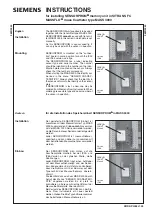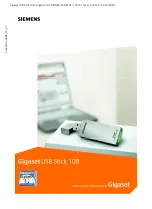
33
• Termination: This is the biggest issue with mixing devices. Here is the
problem: when you have a Wide SCSI bus and you connect Wide (16-bit)
devices to Narrow (8-bit) devices, there are an extra 8 data bits present on the
bus. If you just connect the Narrow data signals and leave the Wide signals
"hanging,” then that part of the bus will not be terminated! The same is true
for connecting Wide devices to Narrow buses: many Wide devices, when
connected to a Narrow bus, won't work correctly if the high bits are not dealt
with. As a result, the Wide data signals must be terminated when bus widths
are mixed. Some adapters that are used to mix devices can terminate these
Wide data signals. Connectors that automatically terminate the extra "Wide"
signals include high byte termination. Ask your computer supply specialist for
the adapters that meet your specific needs.
Can I mix Single-ended (SE) devices and Low-Voltage Differential
(LVD) devices on the same SCSI chain?
This is possible, because LVD devices are backwards compatible, meaning
they can be used with SE buses. The LVD devices will simply be reduced to the
maximum speed and cable length limitations of the SE bus.
For example, if you connect an Ultra2 (LVD) Wide hard drive (with a
theoretical maximum throughput of 80MB/s and maximum cable length of 12
m) to an Ultra Wide (SE) bus (whose theoretical maximum throughput is
40MB/s and maximum cable length 1.5 m), the Ultra2 hard drive will operate
in Ultra Wide mode (at a maximum of 40MB/s, with a maximum cable length
of 1.5 m). Therefore, the LVD device will not be used to its full potential.
To add a SE peripheral to an LVD bus and preserve the data throughput and
cable length of LVD, you can use a SCSI expander called an LVD to SE
converter. This converter divides the SCSI domain into two bus segments – one
segment will operate at the LVD data throughput and cable length and the
other bus segment will operate at the single-ended data throughput and cable
length.
What issues are involved when connecting a device using a more
recent SCSI protocol (for example Ultra3) to an older host adapter
(for example, Ultra2)?
In general, when new SCSI protocols are designed they feature backwards
compatibility, meaning that they are compatible with most of the previous
protocols. This case is no exception. An Ultra3 drive attached to an Ultra2 host
adapter will simply operate in Ultra2 LVD mode, with the reduced transfer
rates of Ultra2. If you connect that same Ultra3 drive to an even older host
adapter (SCSI-2, for example), it will simply operate in the fastest mode the
older adapter is capable of handling (Fast-10 SE mode in the case of a SCSI
host adapter) with the cable length limitations of the older host adapter.
Содержание DDS4 Drive
Страница 1: ...LaCie DDS4 Drive User s Manual...








































